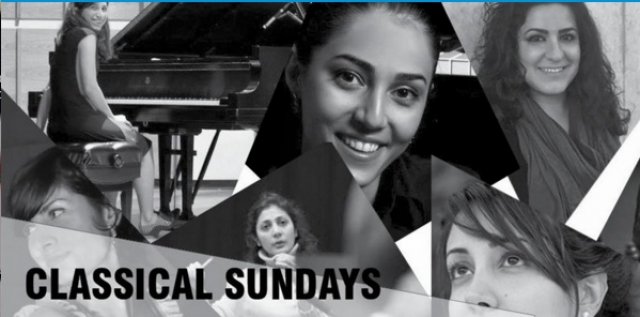Iranian Women Composers at National Sawdust
Cultural Hybrids Performed
By: Susan Hall - Apr 04, 2018
Iranian Women Composers
National Sawdust
Brooklyn, New York
April 1, 2018
Nine Iranian born women composers presented their work in the inaugural concert of their new organization, Iranian Women Composers Association. (IWCA)
Cultural hybrids were performed as many of these women now compose, study and teach in the US. Aida Shirazi of the University of Califronia, Davis, created more familiar cross cultural yearnings in her piece for piano solo.
Is there anything that characterizes this music as Iranian contemporary classical as distinguished from contemporary classical music? Tuning often gives a middle Eastern feel, with harmonies of the region. Classical forms are used. Sometimes the work is an impression. Romantic notes and counterpoint are abundant.
All of the compositions invited us in, which felt like the work of women.
The works of contemporary Iranian-born women composers were culturally hybrid. Many of these women live, teach and compose in the United States. To varying degrees, the harmonies and rhythms of their native Iran are expressed.
There are twelve characteristic scales in Persia.
Shur: G Ap Bb C Dp Eb F G and its four derivatives. Avaz-e Abu Ata: G Ap Bb C D Eb F G, Avaz-e Bayat-e Tork: F G Ap Bb C D Eb F, Avaz-e Afshari: F G Ap Bb C D (p) Eb F Avaz-e, Dashti: G Ap Bb C D (p) Eb F G, Homayun: G Ap B C D Eb F G, Avaz-e Bayat-e Isfahan: G Ap B C D Eb F G, Segah: F G Ap Bp C Dp Eb, Chahargah: C Dp E F G Ap B, Mahur: C D E F G A B, Rast Panjgah: F G A Bb C D E F. Nava: D Ep F G A Bb C D
Note: The underlined letters have approximately the function of a tonic. Small 'b' means "flat"; small 'p' indicates pitch approximately a quarter-tone lower than the indicated note or, in other words, a half flat.
Identifying these scales in the music was beyond my ear, but I could surely hear and delight in the notes that were slightly off. These could be expressed in the string trio and quartet compositions. It is these string groups that seemed closer to Western classical music in its rigorous form demands and also the possibility of melody.
The piano pieces had more difficulty placing notes between notes. Often composers used the piano as a percussion instrument. Sometimes the artists stood and plucked at strings in the sounding board.
Anahita Abassi, one of the founders of IWCA, uses the Kamancheh. This string instrument, with a bowl-shaped resonating chamber, is listed in UNESCO’s world heritage intangible items. It can be used as a percussion instrument by beating the membrane that covers to bowl. Abassi creates beats, as well as haunting melodies expressed by bowing and plucking. We distinguish the bowing around the bowl from the fingers going up high on the tall neck.
Composer Niloufar Shiri performed on the Kamenchech. She received her first degree in performance on this classic instrument.
Abassi creates a dialogue between the conventional Kamencheh and her electronically-generated sounds. It is a powerful and engulfing contrast. Farzia Falah also composes richly with electronic sounds.
The music is often powerful and vigorous, but also delicate around the borders. Titles like Calling, A Winter Memory and And the Moses Drowned are evocative, but most often the works speak for themselves. Rhythms designed to activate our emotion and thinking are aroused. This is done deliberately, according to the artists, who each spoke live at National Sawdust, or on videos projected for the audience.
National Sawdust is the place to go for wonderfully satisfying, cutting edge events like this.

